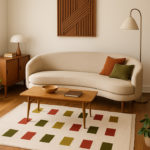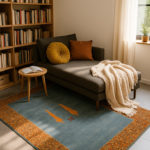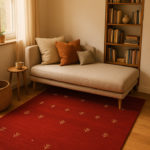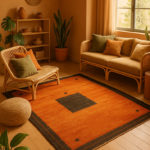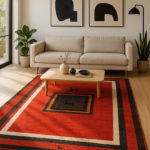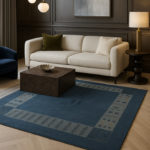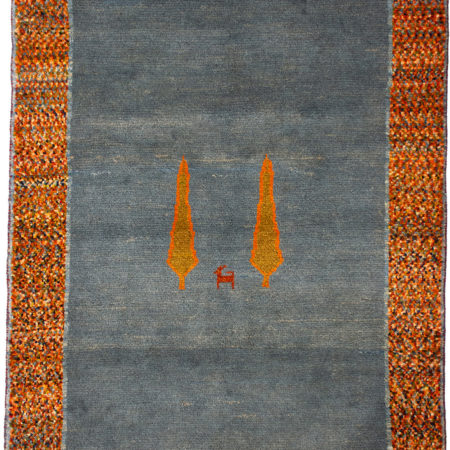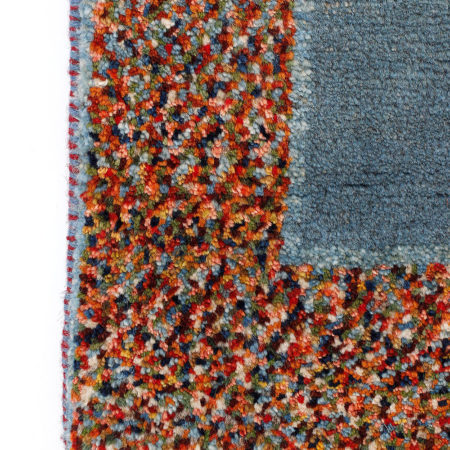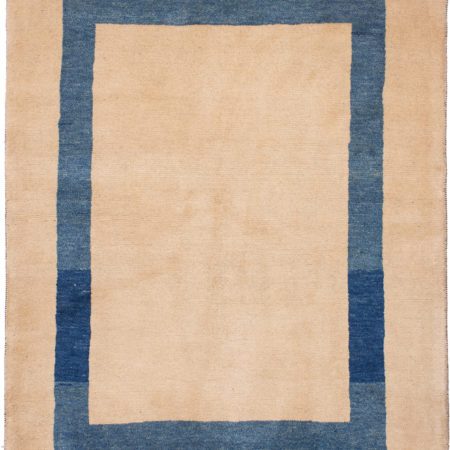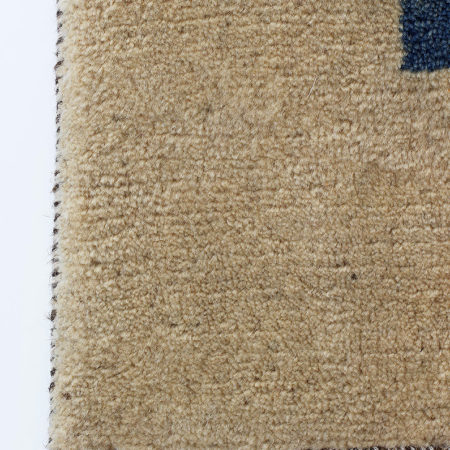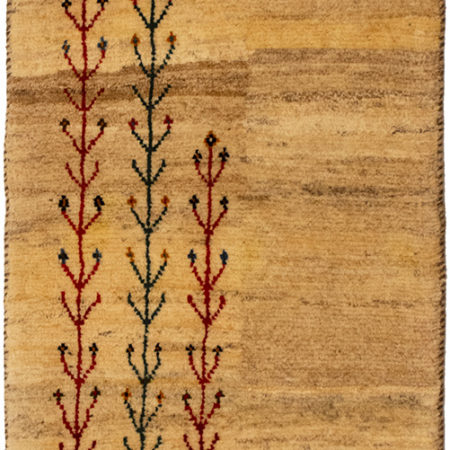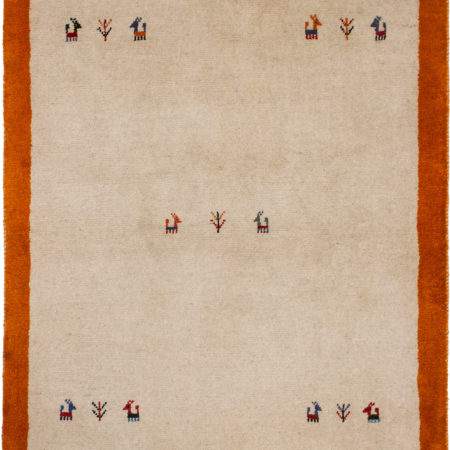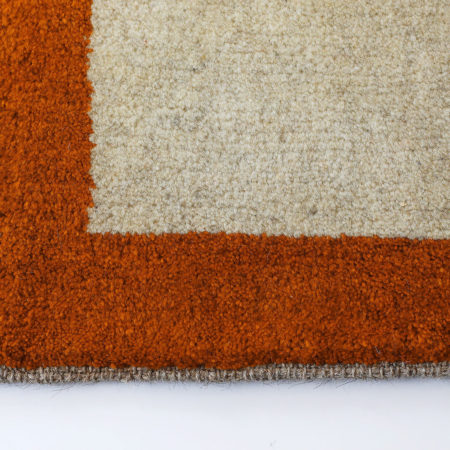Handwoven and deeply personal, Gabbehs are more than just floor coverings—they are visual narratives, rich with cultural significance. These rugs, traditionally woven by nomadic tribes in Iran, stand apart from other Persian carpets due to their spontaneity and individuality. Unlike the rigid symmetry of city carpets, Gabbehs represent the organic creativity of the weaver, blending improvisation with centuries-old inherited motifs. Their raw aesthetic makes them a natural fit for an organic modern interior, where texture and raw authenticity are valued.
A Tradition Rooted in Mindful Living

The Artistic Language of Gabbeh
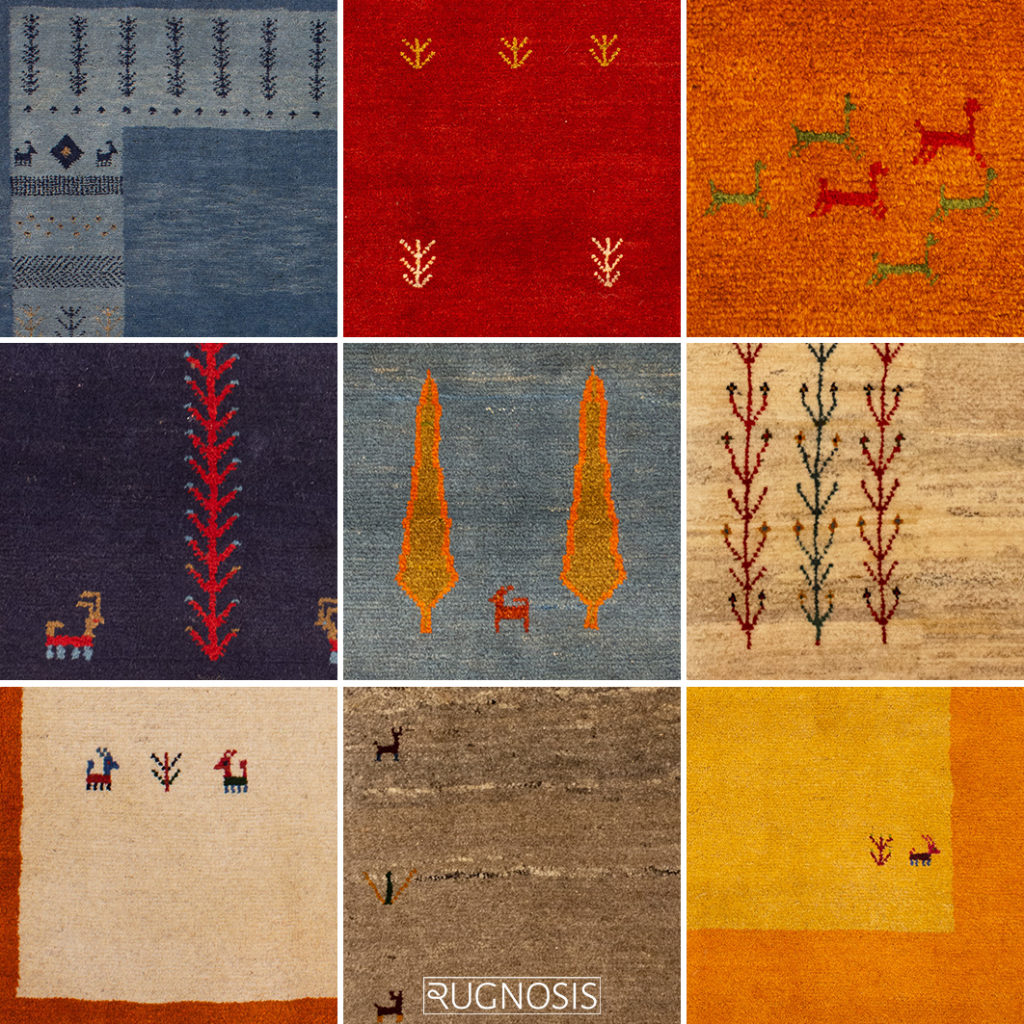
Weaving Techniques and Material Selection
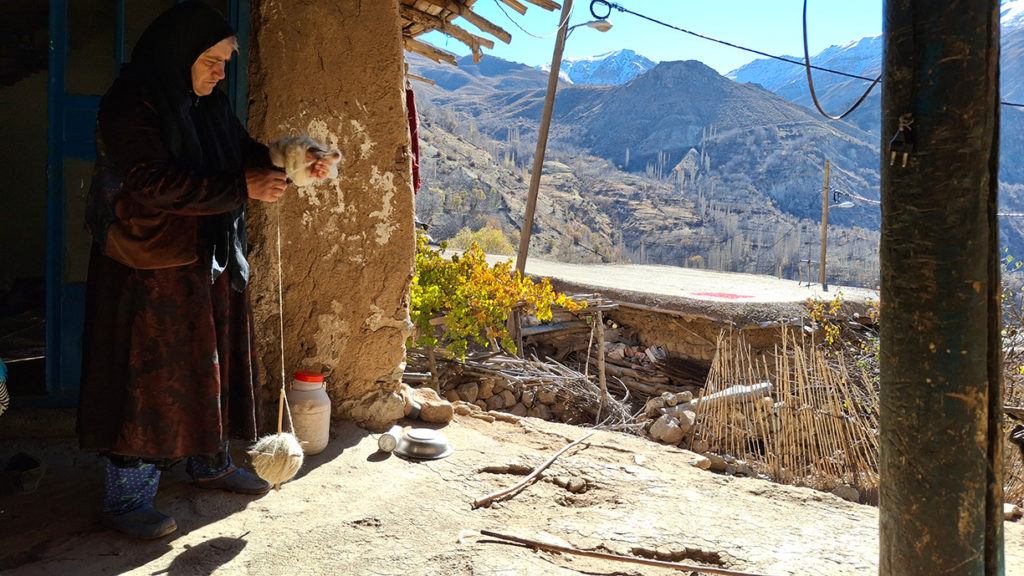
Geographic and Ethnic Diversity of Gabbeh Weaving
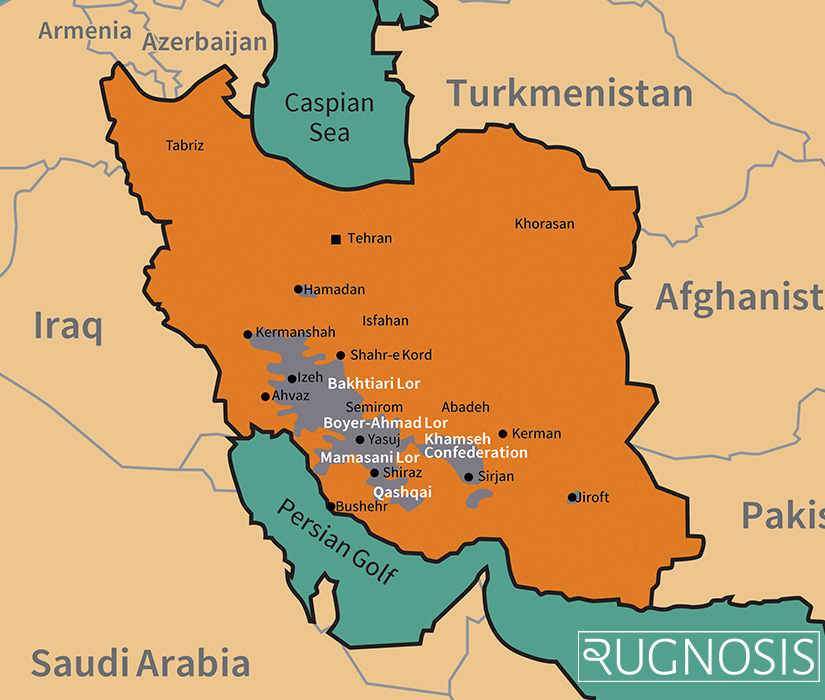
Weaving Traditions and Styles
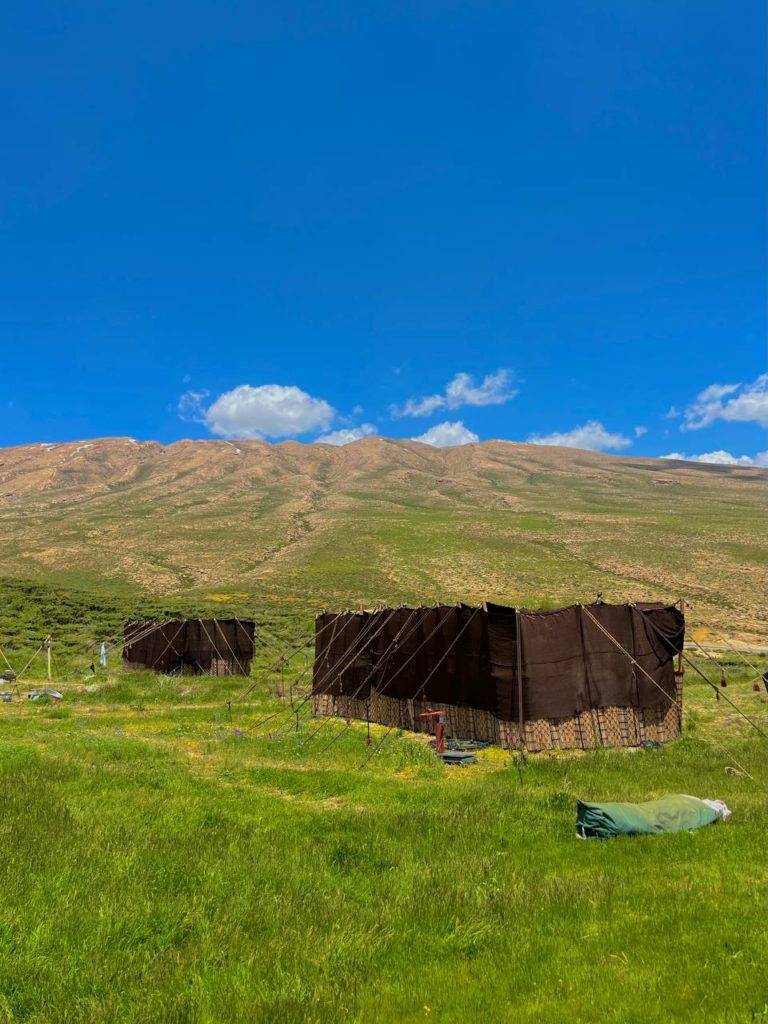
Variety of Gabbeh Rug Designs
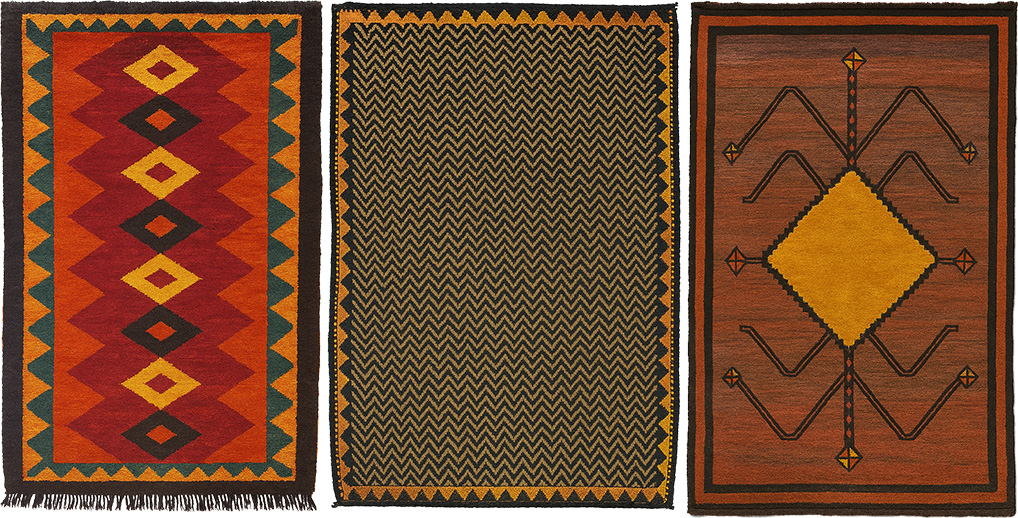
From left to right: Diamond grid design (Courtesy Michail di David Sorgato, Milan), zigzag design (Private collection), and spider design (Private collection, ex-coll. Georges D. Bornet.).
The Evolution of Gabbeh in the Marketplace
A Cultural Identity
A Living Tradition in a Modern Context
Examples of modern interior designs furnished with Gabbeh. Click to see the full image.
Common Questions About Gabbehs
What is Gabbeh rug?
A Gabbeh is a handwoven pile rug originating from Southwestern Iran, renowned for its bold, abstract designs and thick, plush pile —often left ‘unclipped,’ a feature that gives its name. Traditionally, Gabbehs were woven by Iranian nomadic tribes and were used not only as floor coverings but also as blankets or bedding, reflecting their durable and versatile nature. Today, they are celebrated internationally for their distinctive, artistic style, blending simplicity with striking geometric and tribal motifs.
What makes Gabbeh rugs different from other Persian carpets?
Gabbeh rugs feature a thicker weave and longer pile, making them immediately recognisable when compared to other Persian carpets. This structural difference is not merely aesthetic but functional—providing warmth and comfort in the harsh mountain environments where they originated.
How are authentic artisan wool rugs identified?
Look for irregular knotting, natural colour variations, and thick pile characteristic of traditional nomadic weaving.
Qooch is available exclusively through Rugnosis Marketplace.
